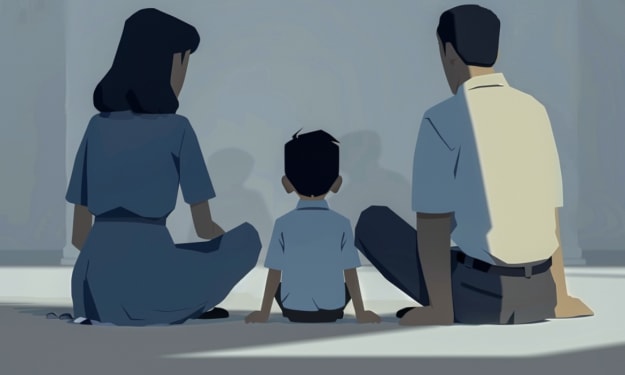Why Cars Are Evil
Designing cities around cars was a terrible mistake to make.

Owning a car can make for a nice luxury. It’s private and more freeing than the alternatives, and to live in some cities, it’s all but a necessity that you have one to get around in. This article is not meant to criticize individuals for owning cars. It’s often the best decision for them. However, if one could design a city to be car-centric versus having well-developed public transportation, there’s no question that the latter is a much better aim than the former. By every conceivable metric, cars extract an unnecessary cost when compared to the alternative.
Personal Health
Statistics show that we’re 30 times more likely to die when riding in a car than on an urban rail train, and 66 times more likely to die when riding in a car than on a bus. Public transportation vehicles are larger, follow standardized paths, and require more training to operate, so these outcomes are predictable.
When it comes to the pollution that damages our respiratory systems and environment, the data finds car to be much worse than other options as well. For every passenger mile, heavy rail transit (such as metros and subways) produce 76% less gas emissions than cars, and bus transit produces 33% less. The transportation sector is the biggest source of pollution in the US, and 58% of that pollution comes from passenger vehicles. One study found that if American-owned cars were their own country, that country would rank as the “sixth largest emitter of carbon dioxide on Earth.”
A sedentary lifestyle has been shown to be horrible for a person’s health and car-dependence necessarily contributes to this. In fact, studies have found that no matter how much you exercise, prolonged periods of sitting throughout the day will increase risk of early death. Every form of public transportation requires some amount more walking than owning a personal vehicle does. Moreover, cars require you to sit for the duration of the trip, whereas that’s not necessarily the case for options like a train. And if the alternative was instead biking or walking more places, the health benefits for the population would be huge.
Further exacerbating the issue, meta-analysis has shown that not being able to drive a car — or otherwise get a ride in lieu of inadequate public transportation — has a significant impact on a person’s ability to get healthcare. This is particularly true for those on the lower end of the socioeconomic spectrum and those who may be uninsured or under insured.
The time we spend driving is also time we could be using to do something more fruitful. A passenger on a train or a bus is just that, a passenger, and therefore needn’t pay attention to the actual operations of the vehicle. Some people lose hours every day, which could otherwise be spent reading or getting work done, stuck behind the wheel of a car. Without personal vehicles, we would have an opportunity for an increased amount of productivity and healthy behaviors.
Financial Burden
The cost of owning a car has always been burdensome, but with our current mix of inflation and higher interest rates, it’s become increasingly challenging. The principal itself has grown to record highs, with the average new car in the US currently going for $47,218. If your credit isn’t perfect, you can easily double that cost with interest expenses. Then, you we have insurance costs, which are following the same inflationary trend as the price of the actual car. The average cost of full-coverage auto insurance went up a whopping 26% from 2023 to 2024.
Assuming you don’t have an EV, like most people, then you’re falling victim to the vagaries in oil prices. In the U.S., you also need to pay to keep the vehicle registered. The costs of maintenance — from repairing damage to keeping fluids stocked and just keeping the car clean — can quickly add up. Taking public transportation instead of owning a personal vehicle saves, on average, $13,000 annually.
This has actually been shown to contribute to socioeconomic inequality because a car is both a huge expense and, in a car-centric city, the only way to efficiently reach a job or school. For this reason, car-dependency becomes a barrier for people who are trying to better their lives. Research shows that since 1960 households without personal vehicles have seen declining income, in absolute terms as well as relative households with personal vehicles.
The consequences of this are worst for those belonging to marginalized communities. Car insurance is more costly for people living in majority-minority areas, even if they’re facing the same risks as people in other areas. People with lower incomes and credit scores are bearing the bulk of the extra interest costs that come with financing a vehicle.
The financial costs are not limited to individuals either. Here are the American Public Transportation Association’s findings in regards to the economic consequences of public transport investment:
⋅ Every $1 invested in public transportation generates $5 in economic returns.
⋅ Every $1 billion invested in public transportation supports and creates approximately 50,000 jobs.
⋅ Every $10 million in capital investment in public transportation yields $30 million in increased business sales.
⋅ Every $10 million in operating investment yields $32 million in increased business sales.
⋅ An estimated $39 billion of public transit expenditures flow into the private sector.
⋅ Home values were up to 24% higher near public transportation than in other areas. Hotels in cities with direct rail access to airports raise 11% more revenue per room than hotels in those cities without.
Environmental Costs
It’s a sad, daily occurence to see some poor animal’s carcass on the side of the road after it was killed by a speeding vehicle, but this is only a tiny part of the harm our cars do to animals. Yet, this alone is a massive problem. A recent study estimates that between 89 million and 349 million birds are killed every year by cars in the United States. That’s just birds — no rodents, reptiles, amphibians, etc.
Our roadways create what some researchers have called “a moving fence,” which fragment animal habitats to devastating effect. For example, herds of mule deer and pronghorns in Wyoming have undergone mass starvation after highways blocked their normal migration routes. Roads are long and relatively thin, so they bisect huge swathes of land, interrupting vital processes for local species.
A city designed for cars is unnecessarily expanded. Everything is farther away from everything else than it has to be to accommodate roads and parking spots. This means that more of nature — more of animals’ natural habitats — are encroached on because of car-dependence.
Likewise, cars are responsible for large amounts of light and noise pollution. Headlights are one significant contributor to light pollution, as are the ubiquitous streetlights lining roads to accommodate vehicles traveling at night. And, of course, cars make a great deal of noise as they drive along, have their horns honked, or even as they sit in idle (if they have a combustion engine).
Light pollution has adverse effects on a host of different species: It can disrupt the migratory practices of birds, the reproduction of amphibians, the efforts of animals trying to hide from nocturnal predators, and much more.
Noise pollution is just as bad for animals. This was demonstrated in a memorable way by the “phantom road experiment.” Researchers played the sound of traffic in a roadless area out in Idaho, and found that nearly 1/3 of the present bird species started to avoid the area, while those that stayed had “worse body condition than they would have…otherwise.” It interrupted their ability to avoid predators, find mates, communicate with chicks, and forage for food.
Finally, we have what is perhaps the biggest issue: The way that emissions from vehicles are affecting the environment, climate, and plant/animal life on Earth. This is a highly popularized issue, and one that rightfully deserves its own article, so I won’t delve into it here.
Urban Planning
In the US, our cars have shaped our cities. What’s best for a car is flat, straight, dull and lifeless asphalt. What’s best for a person is vibrancy, greenery, walkable neighborhoods, and the like. Yet, when I look outside my window, I see a city designed for the needs of cars.
Everything is farther than it would’ve otherwise been, and everything is blander than it would’ve otherwise been. There are two commercial parking spots for every car in the US. (Emphasis on “commercial” as that does not include residential parking.) 22% of all land in city centers is designated for parking!
This design has actually been implicated in helping to bring about the loneliness epidemic. One in three U.S. adults report feeling lonely at least once a week; one in ten report feeling lonely every day. The consequences of this extend beyond the purely emotional. Loneliness has been shown to increase risks of “heart disease, dementia, stroke and premature death.”
Personal vehicles are private and isolating, as are the cities we built for them. We don’t pass our neighbors on the street while walking to get groceries, we don’t sit next to new faces on a bus or train as we commute to work, and all of our friends and family are pushed farther away from us by urban sprawl. As we sit at a red light or crawl through traffic, we might be surrounded by other people, but they’re all in their own little metal boxes, just like we are. It turns out this is a literal barrier to forming connections with others.
Conclusion
A car-centric city is worse than the alternative in just about every conceivable way. It’s terrible for our health (both mental and physical), for animals, for the aesthetics and functionality of our cities, for our financial well-being, etc. I love the United States, and I do what I can to defend this great country at every turn, but our dependence on cars is a major flaw that will be incredibly hard for us to overcome. But just because it’ll be difficult doesn’t mean we shouldn’t try.
About the Creator
Martin Vidal
Author of A Guide for Ambitious People, Flower Garden, and On Authorship
martinvidal.co
martinvidal.medium.com
Instagram: @martinvidalofficial
Enjoyed the story? Support the Creator.
Subscribe for free to receive all their stories in your feed. You could also pledge your support or give them a one-off tip, letting them know you appreciate their work.






Comments
There are no comments for this story
Be the first to respond and start the conversation.